Making homegrown mung bean sprouts is easy! My guide explains the method, the equipment required and useful tips. A delicious stir-fry recipe is also included.
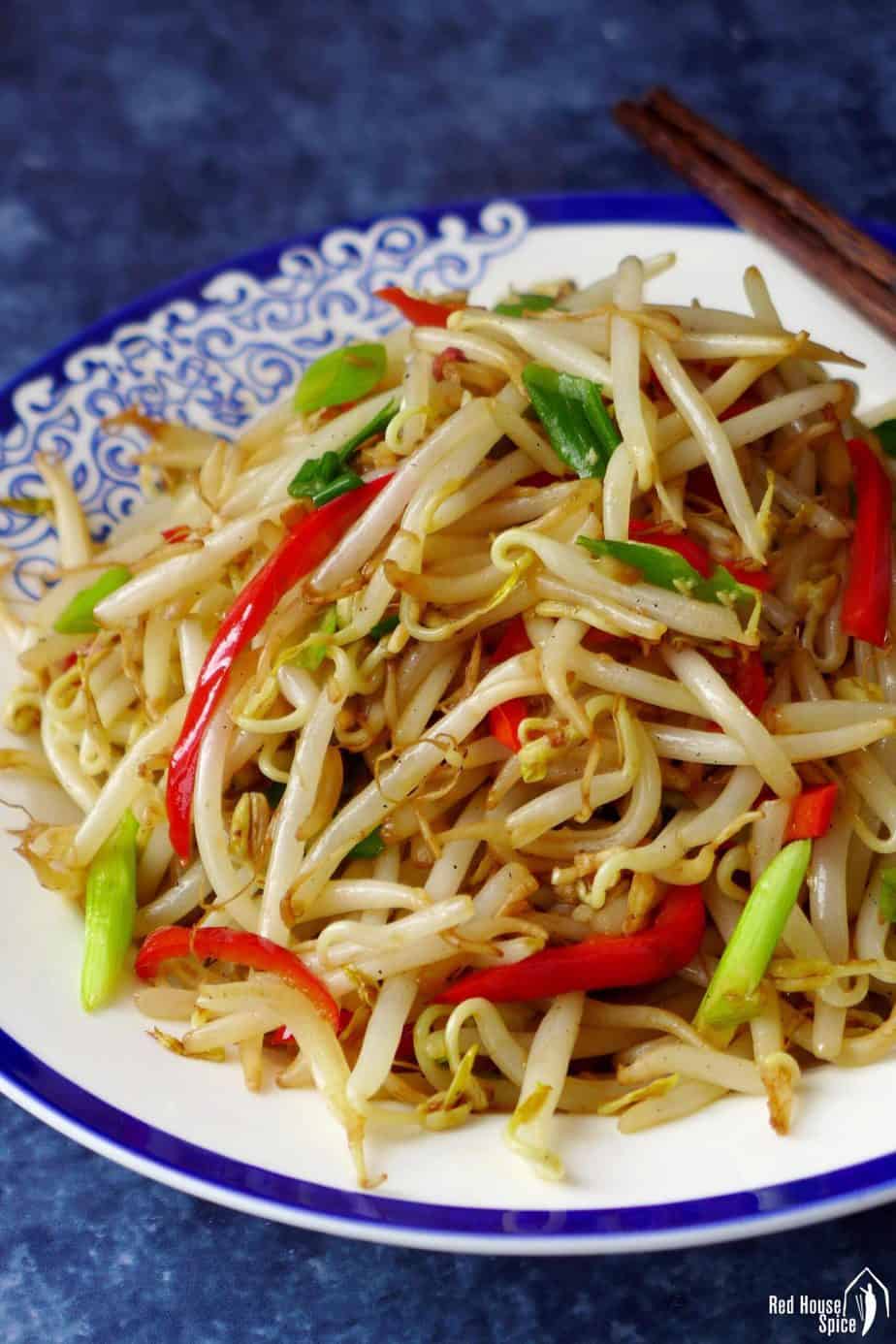
Have you ever tried growing vegetables in your kitchen? I’ve shared a post on homegrown garlic sprouts previously. Today I’d like to introduce another versatile vegetable that you can easily produce at home: Mung bean sprouts (绿豆芽). A quick and tasty stir-fry recipe is also included.
What are mung bean sprouts
In my food-related childhood memories, mung beans (绿豆) have a distinctive presence. These little, dried green beans were made into many delicious dishes: Mung bean congee, mung bean cake, chilled mung bean soup, and many others.
But the most fascinating thing was to watch my dad sprout them at home. Kept in a moist, dark environment, mung beans would grow white, long, crunchy sprouts within a few days. It was magical in my eyes!
Known as lǜ Dòu Yá (绿豆芽) in Chinese, mung bean sprouts are widely used in Chinese cuisine to create savoury dishes, such as stir-fries, salads & soup. I love their crispy, juicy texture and the fact that they are low in calories (about 30 calories/100g) but packed with healthy nutrients.
Three golden rules to follow
To successfully grow mung bean sprouts at home, you need to follow three golden rules:
- Use good quality mung beans which are plump, smooth and uniform in size.
- Make sure the beans are always moist, but not waterlogged, throughout the sprouting process.
- Block light as much as possible to avoid colour change and bitterness.
Please be aware that the warmer the room temperature is, the faster the beans would sprout. So the time required varies. It usually takes between 4-6 days for the entire process.
Equipment required
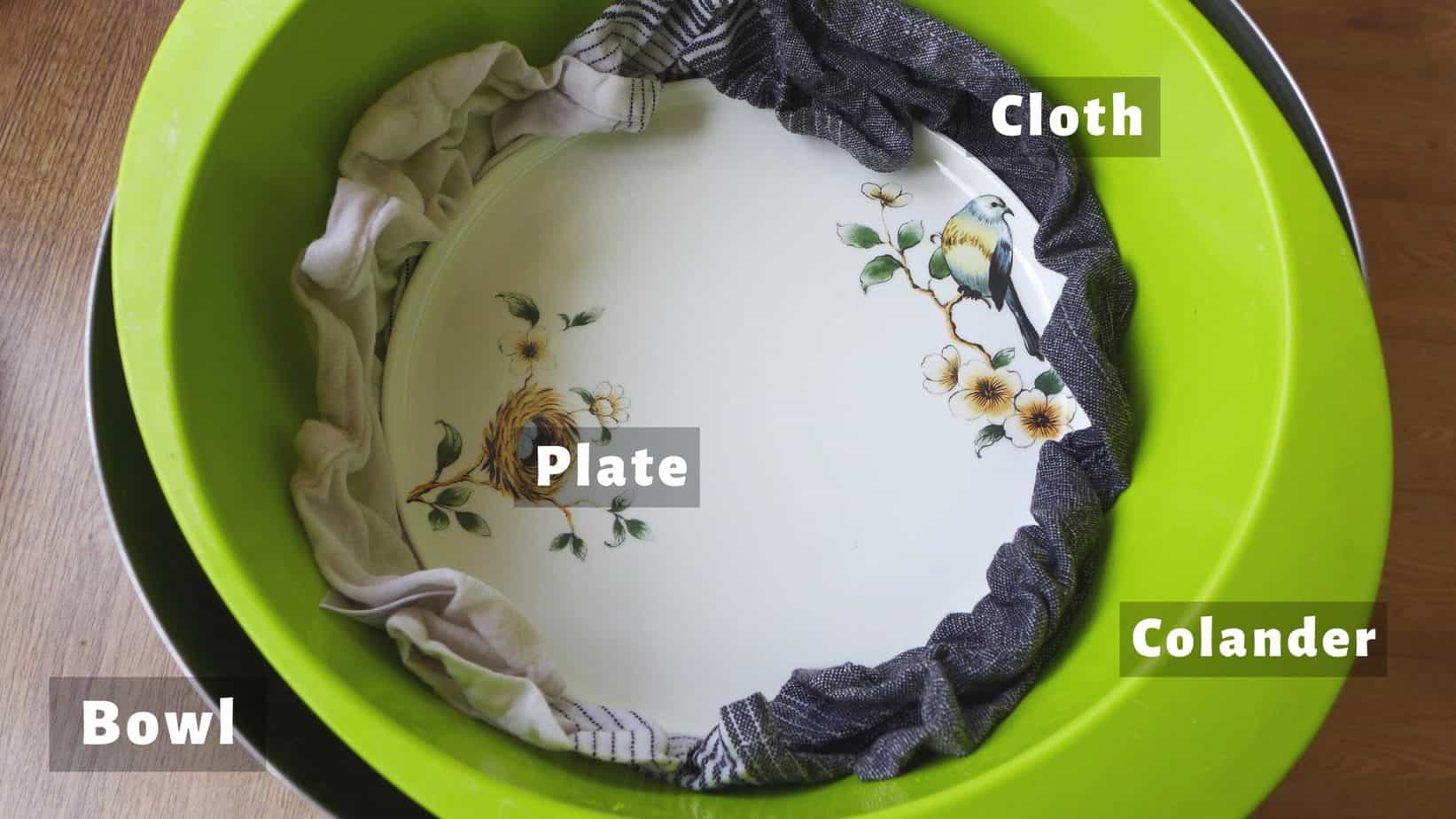
Before you start, make sure you have the following items at hand:
- A colander (or a large sieve). The beans will sprout inside the colander. The holes of the colander will help to drain off the water effectively while rinsing the beans twice a day during the process.
- A large, non-transparent bowl. It should be big enough to hold the colander. It collects any water dripping off the colander and blocks the light.
- Two pieces of cloth (eg. tea towels). Preferably, they should be dense enough to block the light. One piece is for covering the beans. The other is for covering the entire bowl.
- A plate that fits in the colander. It is placed on top of the cloth which covers the beans. The weight helps the bean sprouts to grow fatter and straighter.
Four steps to sprout mung beans
STEP 1: Prepare the mung beans
Choose good quality mung beans which are plump, smooth & uniform in size. Remove the poor quality beans which are dark or wrinkled.
Rinse the mung beans thoroughly. Then put the beans into a bowl filled with clean water. Leave to soak until they double in size and some tiny sprouts appear. This process takes about 1-2 days depending on the quality of the beans and the room temperature.
STEP 2: Set up the sprouting bowl
Drain the beans. Place them in a colander. Spread to reduce overlapping. Cover with a wet towel then place a plate on top.
Put the colander inside a large bowl (non-transparent). Then cover with a piece of cloth to block light. Leave in a cool, shady place.
STEP 3: Rinse twice a day
In the next 3-5 days, rinse the beans under running water twice a day (Set alarms in case you forget). This is how to do it each time:
- Uncover the bowl. Remove the colander.
- Take the plate away but do not remove the towel over the beans.
- Rinse under running water. Then put the plate back.
- Place the colander back into the bowl. Cover with the cloth.
STEP 4: Harvest and store
When the bean sprouts are fully grown, pull them out of the colander (the roots will be caught in the holes). Store in a sealable bag in the fridge for up to three days.
Before using, rinse the sprouts several times to remove most of the green skin off the beans.
How to use mung bean sprouts
As a commonly used ingredient, mung bean sprouts play a versatile role in Chinese cuisine. They are appreciated for their crispy, juicy texture and the mild bean flavour. Here are the popular ways to cook them:
- Pair with meat. In stir-fry dishes, mung bean sprouts go well with pork, beef, chicken or fish. The classic delicacies like Sichuan Boiled Beef & Sichuan Boiled Fish often use them as an accompaniment.
- Cook with noodles. It’s very popular to add mung bean sprouts to fried noodle dishes, for example, the Cantonese classic Beef Chow Fun.
- Make a salad. Blanche the bean sprouts in boiling water for 20 seconds. Drain then leave to cool. Season with the dressing for Smashed Cucumber Salad.
- Do a Stir-fry. The recipe included in this post is a good example.
How to make a tasty stir-fry
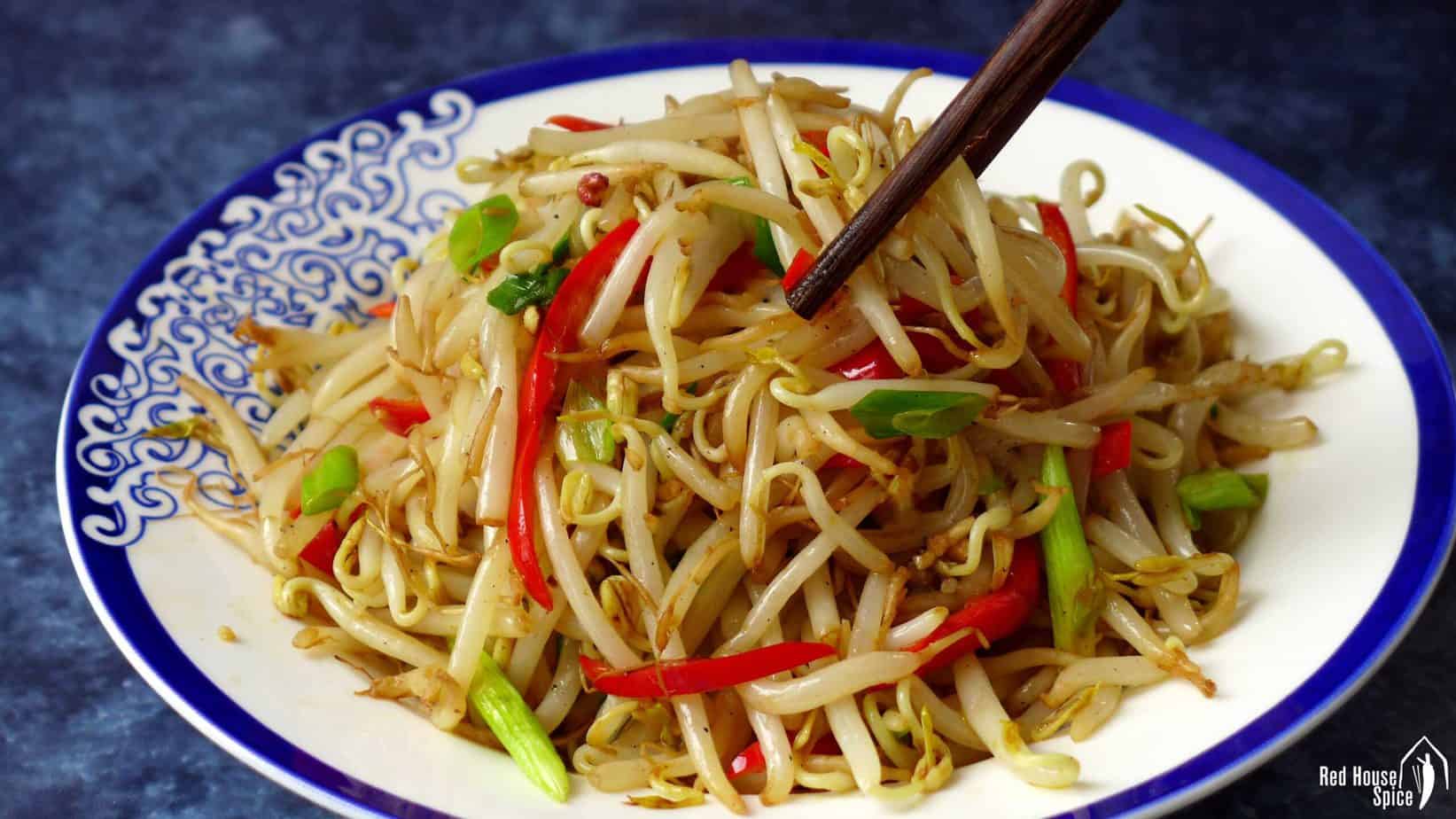
Stir-frying mung bean sprouts is super easy. Having some herbs & seasoning ready at hand, you can finish cooking in just 2 minutes. To make the dish colourful and tasty, I include the following ingredients:
- Garlic, fresh red chilli, scallions
- Sichuan pepper. It adds an interesting flavour kick but please feel free to omit if unavailable.
- Light soy sauce, Chinese black rice vinegar, a little salt and sugar
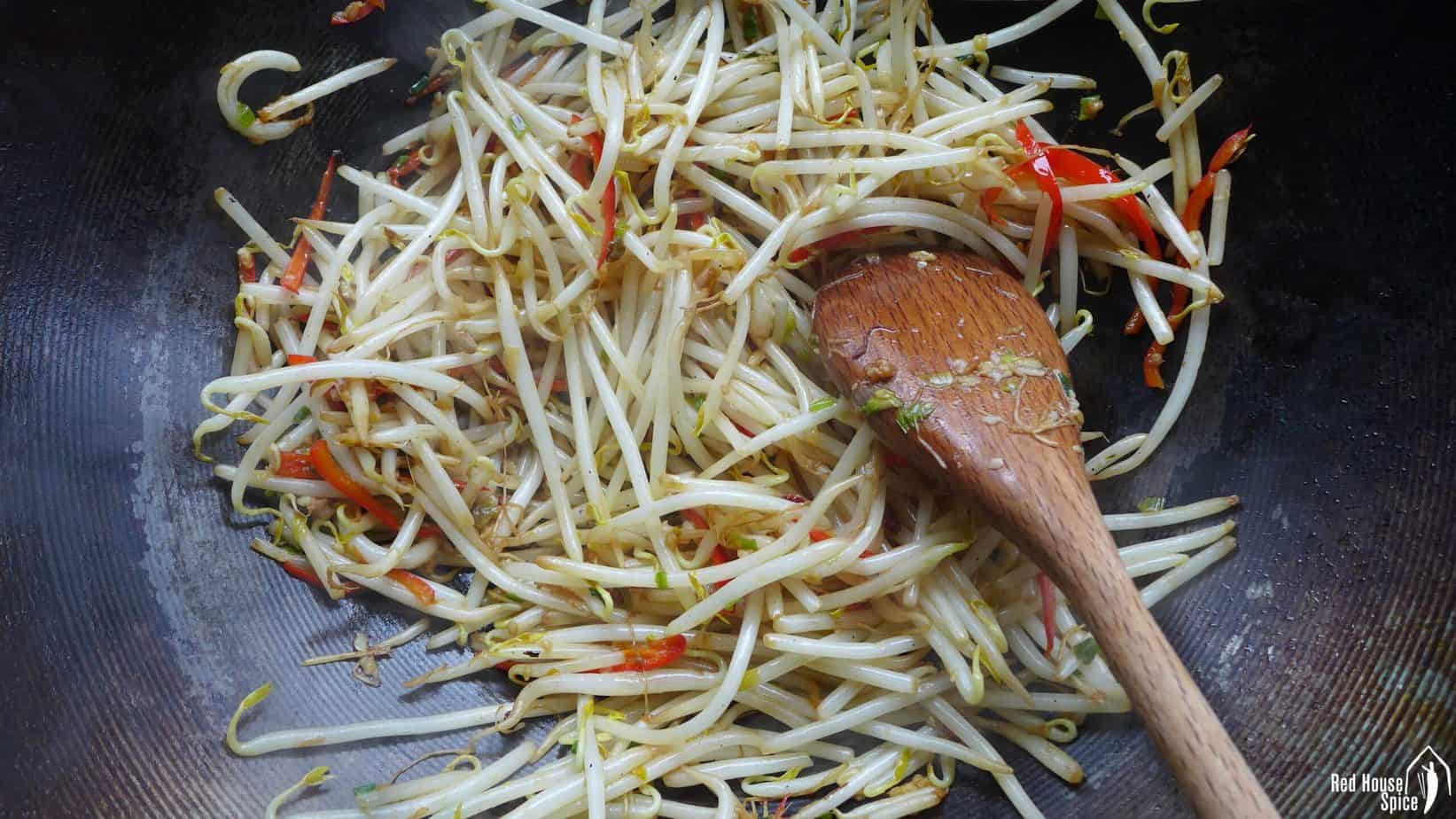
To retain the crispiness of the sprouts, you need to fry them on highest possible heat and act fast without overcooking. Otherwise, you might end up with a soggy, watery dish.
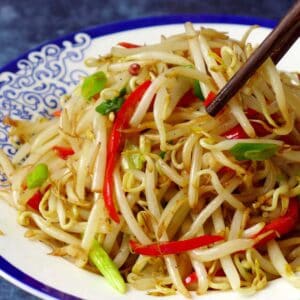
Mung bean sprout stir-fry & homegrown method
Ingredients
For the seasoning
- 1 teaspoon light soy sauce
- 2 teaspoon black rice vinegar
- 1 pinch salt
- 1 pinch sugar
For the stir-fry
- 1 tablespoon cooking oil
- 3 cloves garlic - minced
- 1 pinch Sichuan peppercorns - optional
- 300 g mung bean sprouts
- 3 fresh chili - sliced
- 2 stalk scallions - finely chopped
Instructions
- Mix all the ingredients for the seasoning. Set aside.
- Heat up the wok over high heat. When it starts to smoke, pour in oil.
- Stir in minced garlic and Sichuan pepper. Fry until fragrant.
- Add mung bean sprouts and fresh chili. Stir fry until they lightly wilt.
- Pour in the seasoning mixture. Add chopped scallions.
- Give everything a quick stir then dish out.
NOTES
- Uncover the bowl. Remove the colander. Take the plate away but do not remove the towel over the beans.
- Rinse under running water. Then put the plate back.
- Place the colander back into the bowl. Cover with the cloth.
NUTRITION
NUTRITION DISCLOSURE: Nutritional information on this website is provided as a courtesy to readers. It should be considered estimates. Please use your own brand nutritional values or your preferred nutrition calculator to double check against our estimates.


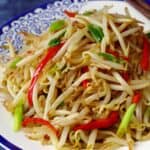
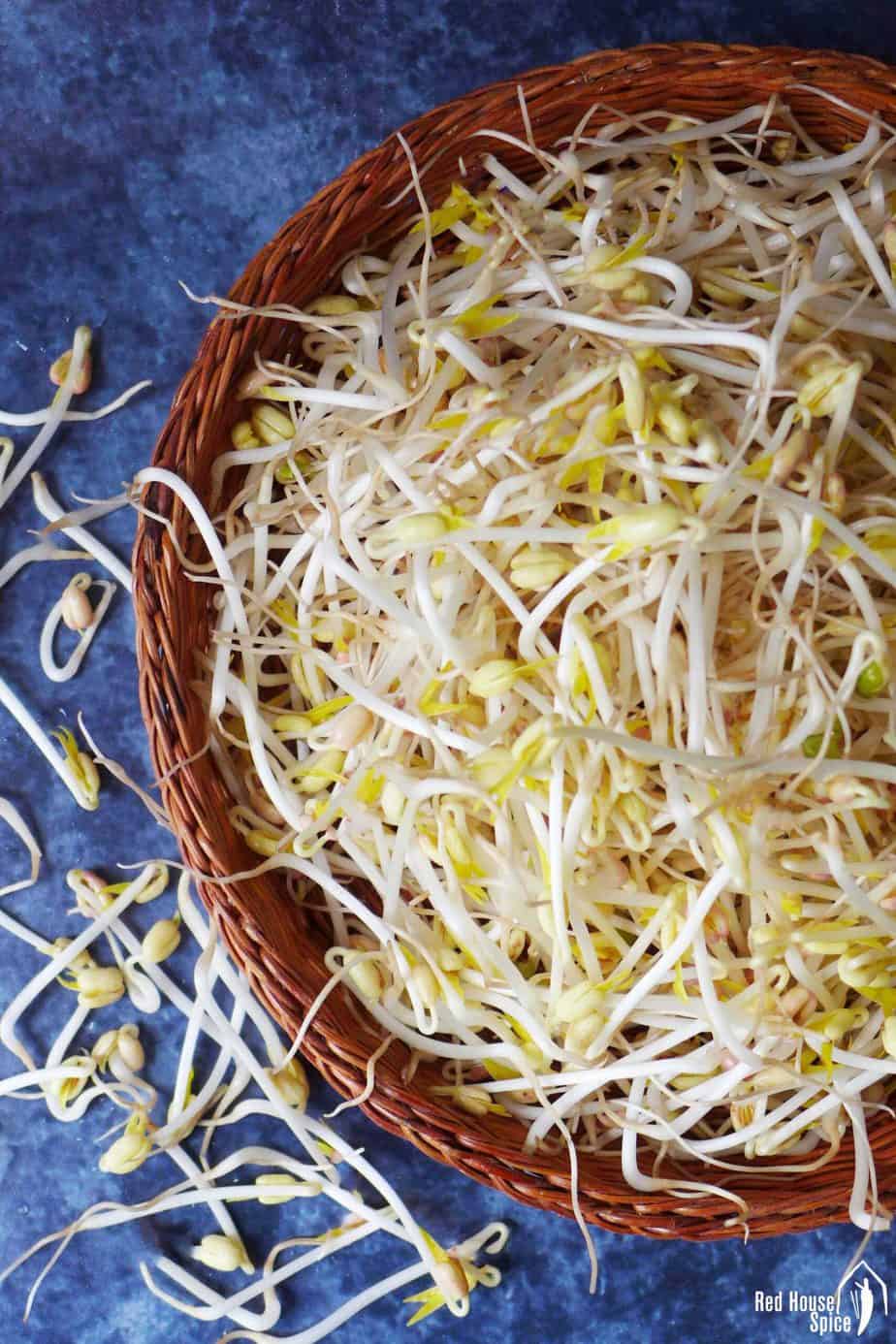
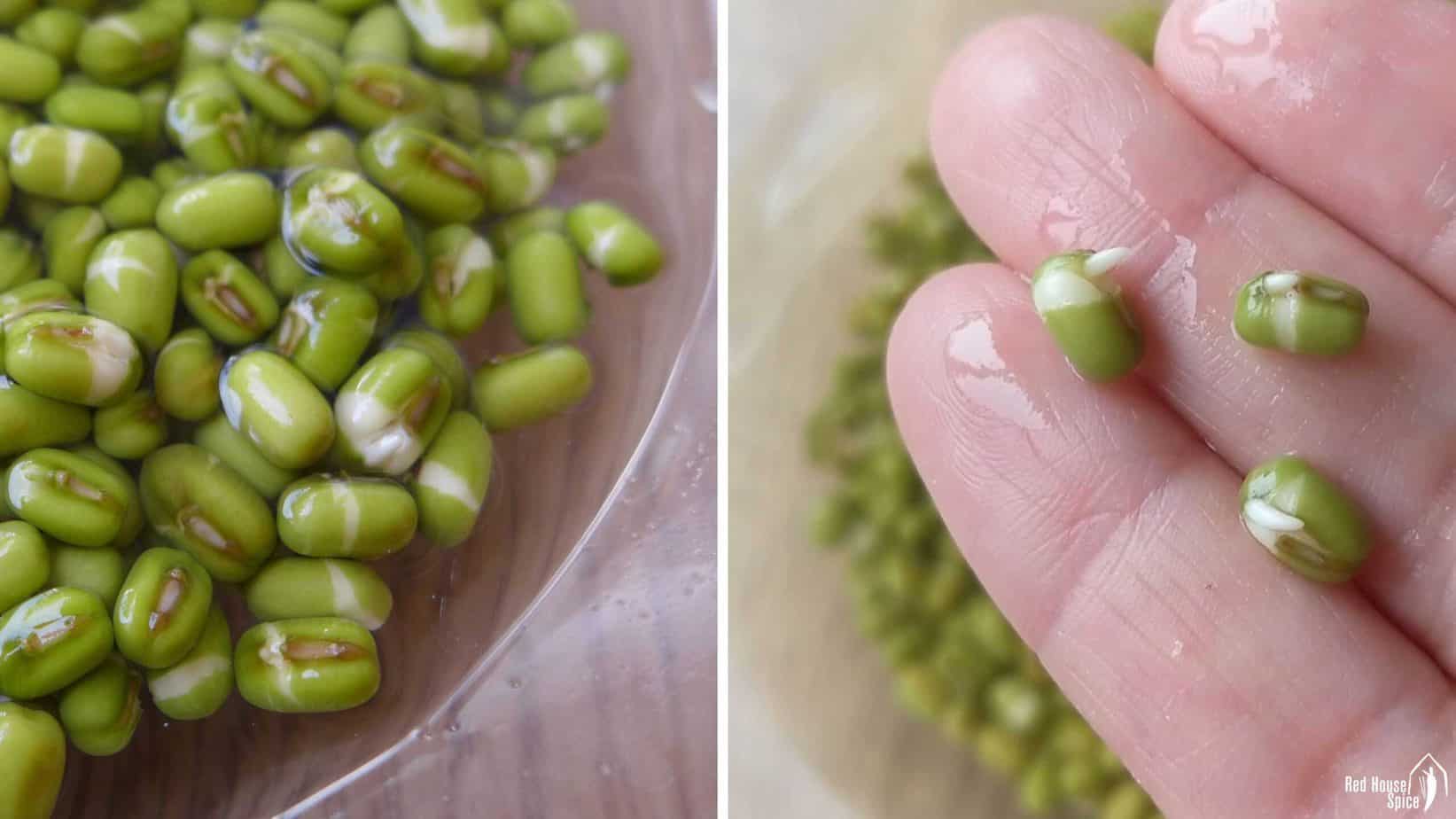
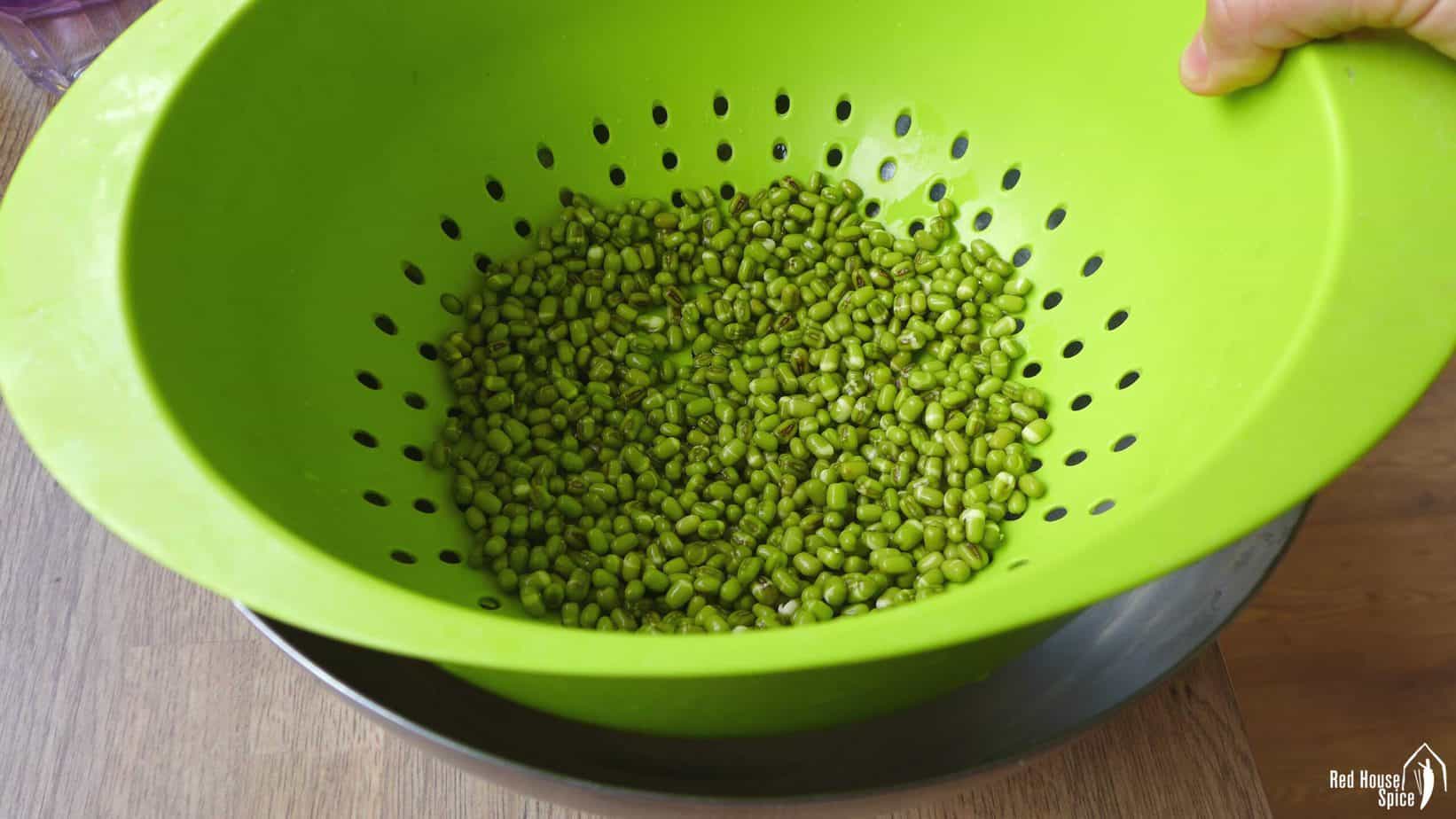
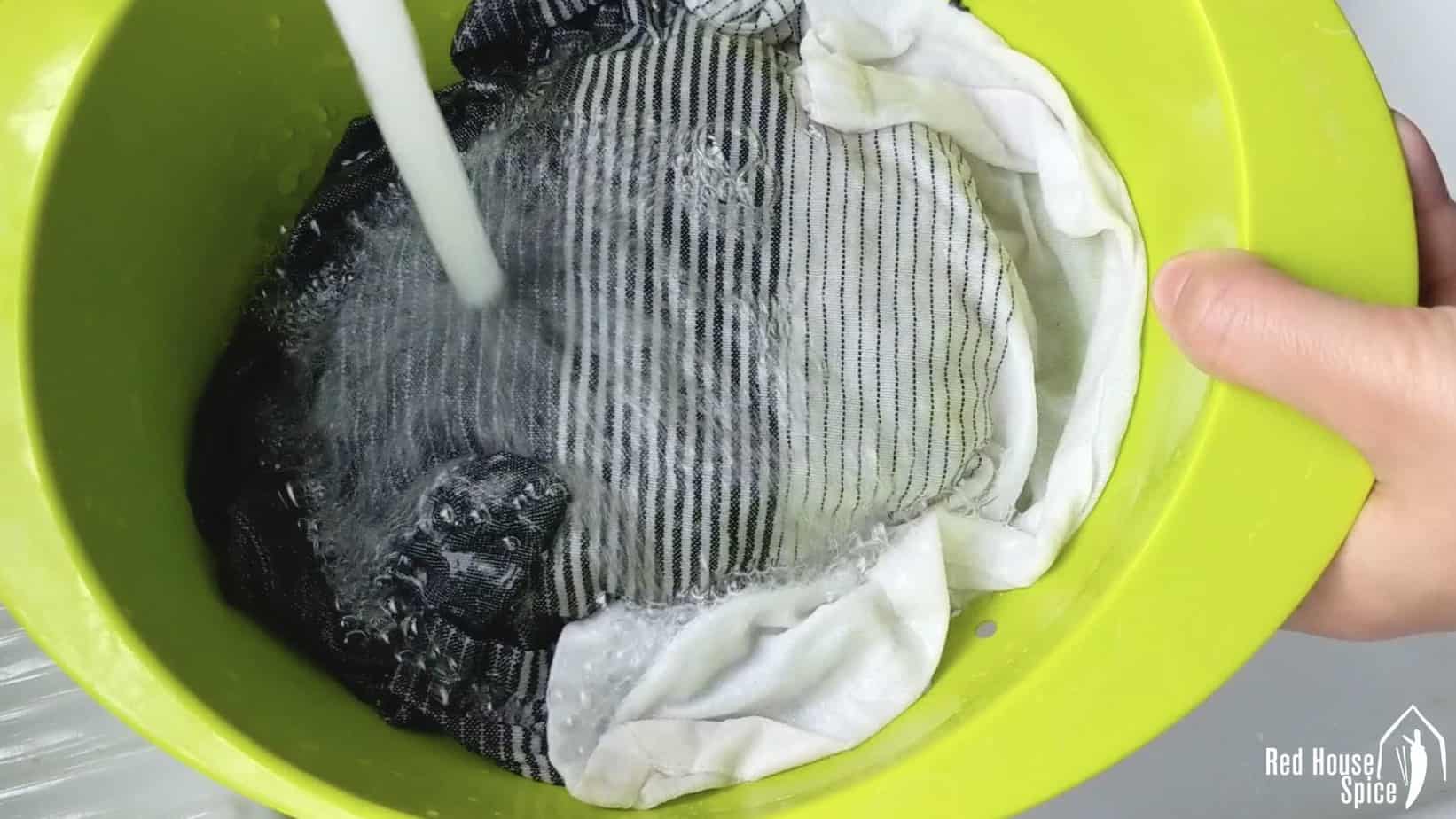
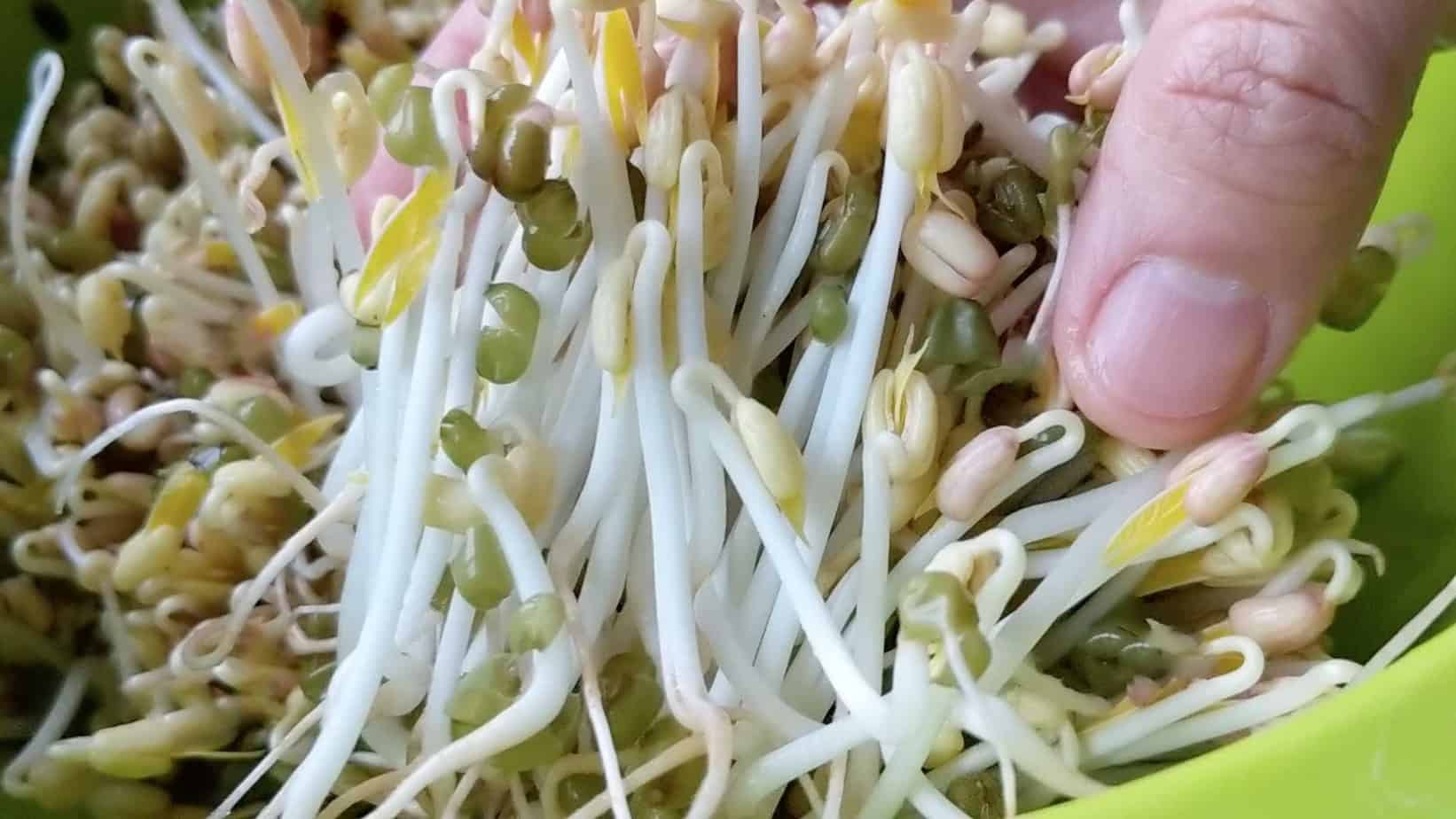
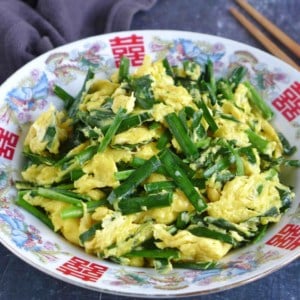

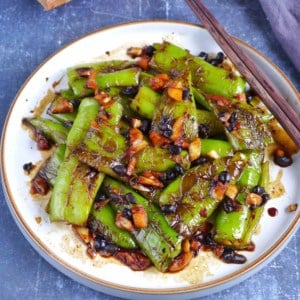

We made this according to the instructions (though without the optional peppercorns) to add to a Poke Bowl. The spice and flavor were great!
Tonight I was brave enough to add the pinch of Sichuan peppercorns! They provided only a gentle tongue-numbing effect. This recipe takes as little time as is promised in the recipe. And the bite and flavour are lovely.
You’ll for sure slowly get used to the wonderful taste of Sichuan Pepper.
I’m jealous that your sprouts are long and fat but don’t have a lot of rootlets, just one main root. Mine get so many, the sprouts look ugly hairy.